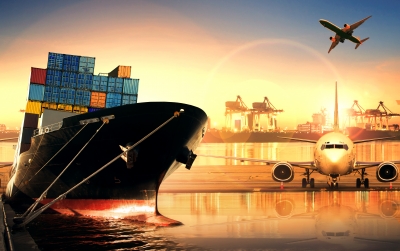-
Asia Pacific is emerging as a key player in maintaining global trade resilience amid shocks and shifts arising from US tariffs
-
Six of the 10 fastest growing trade lane sources are Asian economies, according to the DHL Global Connectedness Tracker
-
Sharpest shifts in trade distances were observed in Singapore, Thailand and China
-
Members of the Association of Southeast Asian Nations have emerged as China’s top export destination market
-
In the first half of 2025, global trade grew faster than in any half-year since 2010, excluding the pandemic rebound
As global trade continues to be shaken by policy shocks arising from US tariffs, shifting patterns show Asia Pacific is emerging as a key player in driving international resilience.
This assessment is contained in a report by DHL and New York University’s (NYU) Stern School of Business, released recently as a special update to the DHL Global Connectedness Tracker.
“Asia Pacific’s performance stands out due to its adaptability and strategic positioning, and the latest data shows how collaboration in the region is deepening even amid global uncertainty,” Ken Lee, DHL Express CEO for Asia Pacific, said in a press release.
The DHL Global Connectedness Tracker shows that in the first half of 2025, international trade grew at a faster rate than in any half-year since 2010, excluding the pandemic rebound.
U.S. imports surged early in 2025 as buyers rushed to frontload purchases ahead of tariff hikes, which mostly took effect in August. But even after the frontloading wave subsided, global trade volumes remained above prior-year levels.
Among the world’s 100 largest trade lanes, six of the 10 fastest-growing were exports originating from an Asian economy, highlighting the region’s pivotal role in driving global trade momentum.
Additionally, among the 50 largest trading nations, Hong Kong SAR, Thailand, Malaysia and Vietnam were among the top 10 markets that saw the fastest trade value growth, indicating the Asia Pacific region’s growing influence and resilience in supply chain networks.
Intra-Asia trade showed signs of continued integration and expanding connections, with East Asia & Pacific’s intra-regional trade share rising from 55% to 56%.
“From ASEAN’s rising role in absorbing trade flows to countries in the Asia Pacific region engaging more intensively with their neighbors, businesses in our region are proving agile and forward-looking,” Lee said, “DHL is well-positioned to support our customers in navigating any shifts in trade patterns, and we will continue to build capabilities where our customers want to be.”
Among the 50 largest trading nations, the trade distances declined the most in Thailand, dropping 79 kilometers (km); China, 76 km; Singapore, 71 km; and Hong Kong SAR, 61 km.
“This reflects Asian economies’ pivoting of trade flows toward regional partners to maintain growth. It also signals the region’s efforts to enhance its infrastructure and connectivity, making it more attractive to participate in cross-border trade,” DHL said.
READ: Air cargo rates in Q4 expected to see occasional spikes with tight capacity
In January to August, China was able to fully offset the 15% drop in exports to the US with a same level of increase in exports to members of the Association of Southeast Asian Nations (ASEAN).
“In fact, ASEAN emerged as a key growth destination for Chinese exports, highlighting the region’s rising importance in China’s trade portfolio,” DHL said, noting that there were also drops in exports to Russia, Korea, Brazil, and Mexico.
“Trade and international business investment trends so far in 2025 do not support the view that globalization has gone into reverse,” said Prof. Steven Altman, Director of the DHL Initiative on Globalization at NYU Stern’s Center for the Future of Management.
“While it would be a mistake to disregard current policy threats to globalization, companies are not generally pulling back from international markets, trade is crossing the longest average distance on record, and geopolitical conflicts have reshaped only a small fraction of the world’s international activity,” he said.
The latest data, Altman said, indicates that businesses are “managing the risks and opportunities of a connected world” instead of withdrawing and simply containing themselves within countries or regions.
READ: Ocean freight market rates drop to 2023 levels as capacity continues to expand









